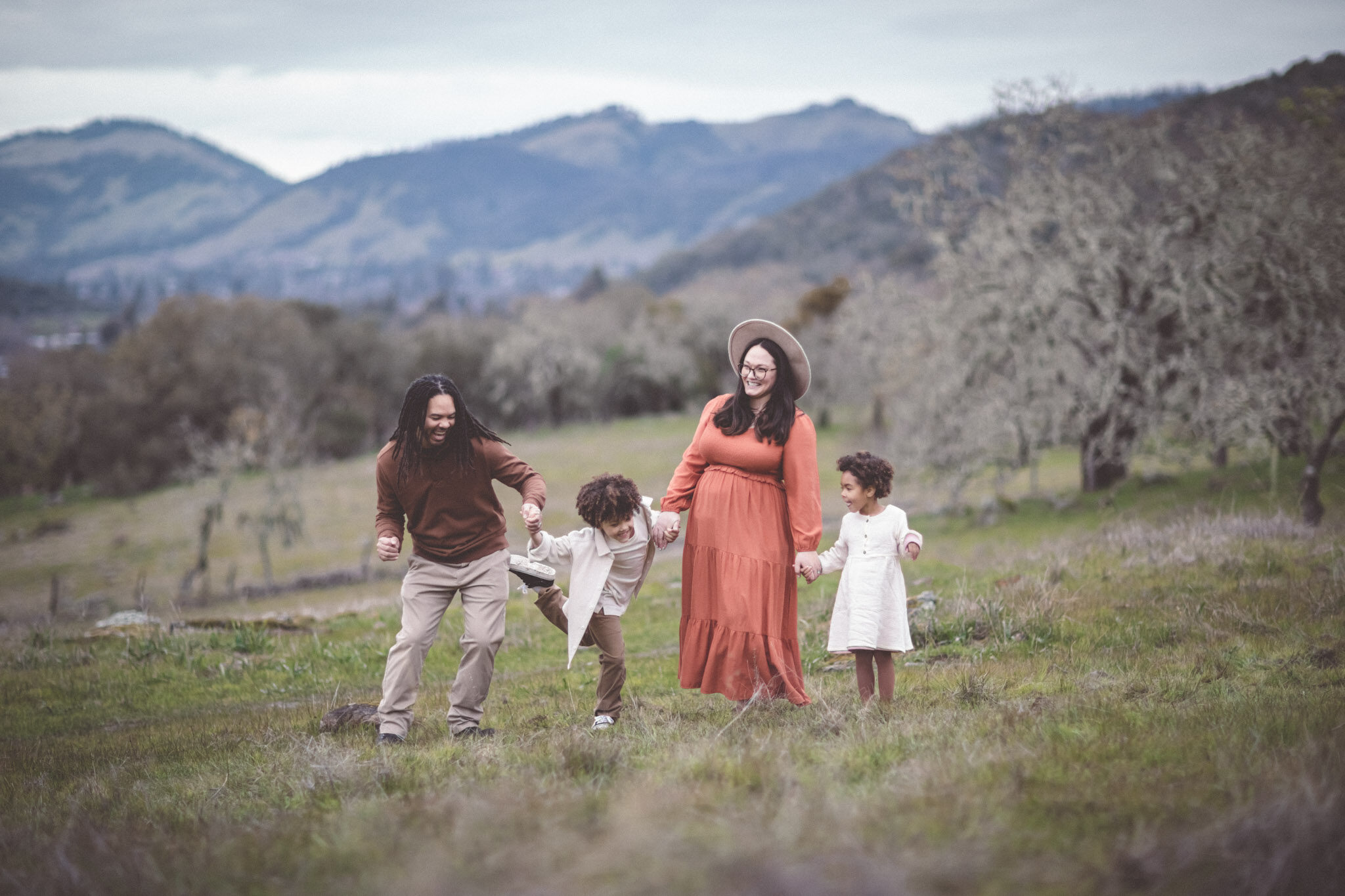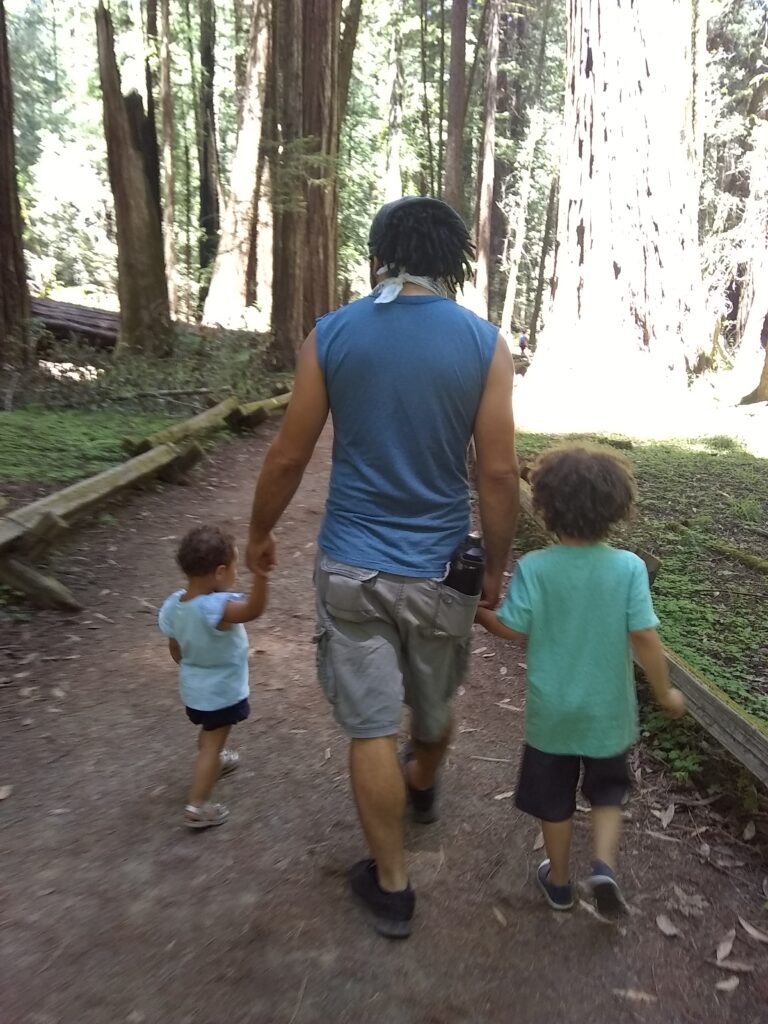Voices of Sherwood: Vincent Hart-Tinsley, Living Beside Nature

Vincent Hart-Tinsley took a meandering path to engineering, first working in the food industry. Returning home from work late one night his motorcycle was struck by a truck, sending him to intensive care for two weeks and requiring 16 reconstructive surgeries to save his leg. That accident changed his perspective. He earned an engineering degree from San Francisco State University. There, he realized he was a tinkerer, who enjoyed taking things apart and putting them together since childhood. He embraced the challenge. Every time he solved a problem or improved a solution, it spurred him to take on another challenge.
Vincent loves the outdoors, whether taking his family camping, hiking, or to the beach. He grew up along California’s Russian River always outside with friends and family and now treasures watching his two young children embrace those experiences. Whether in the forest, on the trail, or sitting in the sand, his kids inspire him, bringing a fresh perspective to his adult passion – creating designs that respect and protect nature.
On family outings, his son or daughter will wonder about the design of this wall or that path. They’ll discuss the design elements and the options. Out there during a relaxed conversation with his kids, Vincent’s brainstorming begins, the first step on the path to a solution he’s been puzzling over for weeks.


When he gets back to work, he realizes he’s already walked through his options. Those options aren’t the only thing he brings back to the office after trips into nature with his children. Those outings are grounding, a never-ending reminder that his design decisions will reverberate over the decades.
The saying that engineers can’t change the past has resonated with Vincent. But they can change the present, a present that will become the past for the children of today. For that future — their future — he finds ways to work within nature rather than seeking solely to control it. It’s common sense. Every other species on the planet does it, he notes. And now, with the climate crisis, it is imperative.
For Vincent, that means understanding what’s done upstream impacts those downstream. Not just when it comes to rivers and their flow, but downstream in the timeline, where the environmental effects of today trickle down through the years. He believes the way to change the past, which led to the climate crisis, is to change the present because it will become the past.
He’s passionate about transforming how we preserve and protect water, a particularly vexing problem in the West where it is scarce. His designs find ways to harvest water, reuse water, and mitigate stormwater pollution to keep rivers clean. He enjoys solving the puzzle to pull together solutions.
One place where he’s helped design comprehensive water solutions is Knoll House in the Napa Valley, a project that sensitively integrates a boutique hotel and restaurant adjacent to vineyards. Amid the ongoing drought, Knoll House will be one of the first commercial properties in the area to recycle 100% of its wastewater on the property. By using the water for irrigation and in toilets, it will decrease its overall water demand. Four 40,000-gallon tanks will store the recycled water on site, enhancing the property’s fire protection as that threat increases.
To slow and filter pollution runoff before it runs into a nearby creek, the team has designed permeable paving in the parking lot, as well as a large permeable gravel storage area. That has the added benefit of preventing damaging erosion as storms intensify, dropping historic amounts of rain between periods of drought. He hopes Knoll House will be a beacon, a catalyst for similar solutions in Napa County and beyond.
Joining Sherwood as an engineer realigned Vincent with the path he started before detouring into food. At Sherwood, he credits like-minded colleagues with forging his childhood love of the outdoors into a conscious philosophy to live within nature.
One of his first projects with Sherwood was Kresge College at the University of California at Santa Cruz. Vincent and his colleagues created a sustainable infrastructure system featuring storage for more than 100,000 gallons of stormwater collected from roofs and hardscapes and then treated before being deployed for irrigation and toilet flushing. Pedestrian walkways were widened, and a channel system was enhanced to collect and filter stormwater runoff for reuse.
Vincent sees Sherwood designs as not just engineering projects, but ways to change the present and preserve the future. Every time a living within-nature solution is shared, it feeds a movement to embrace the challenge of the climate crisis.

In the end, what matters most to Vincent is the look on his children’s faces when they explain his work to others, proud that he’s doing what he can to improve their small part of the world. It prods him to do more, to keep brainstorming, to dive deeper, and to find solutions to the puzzle of the present.